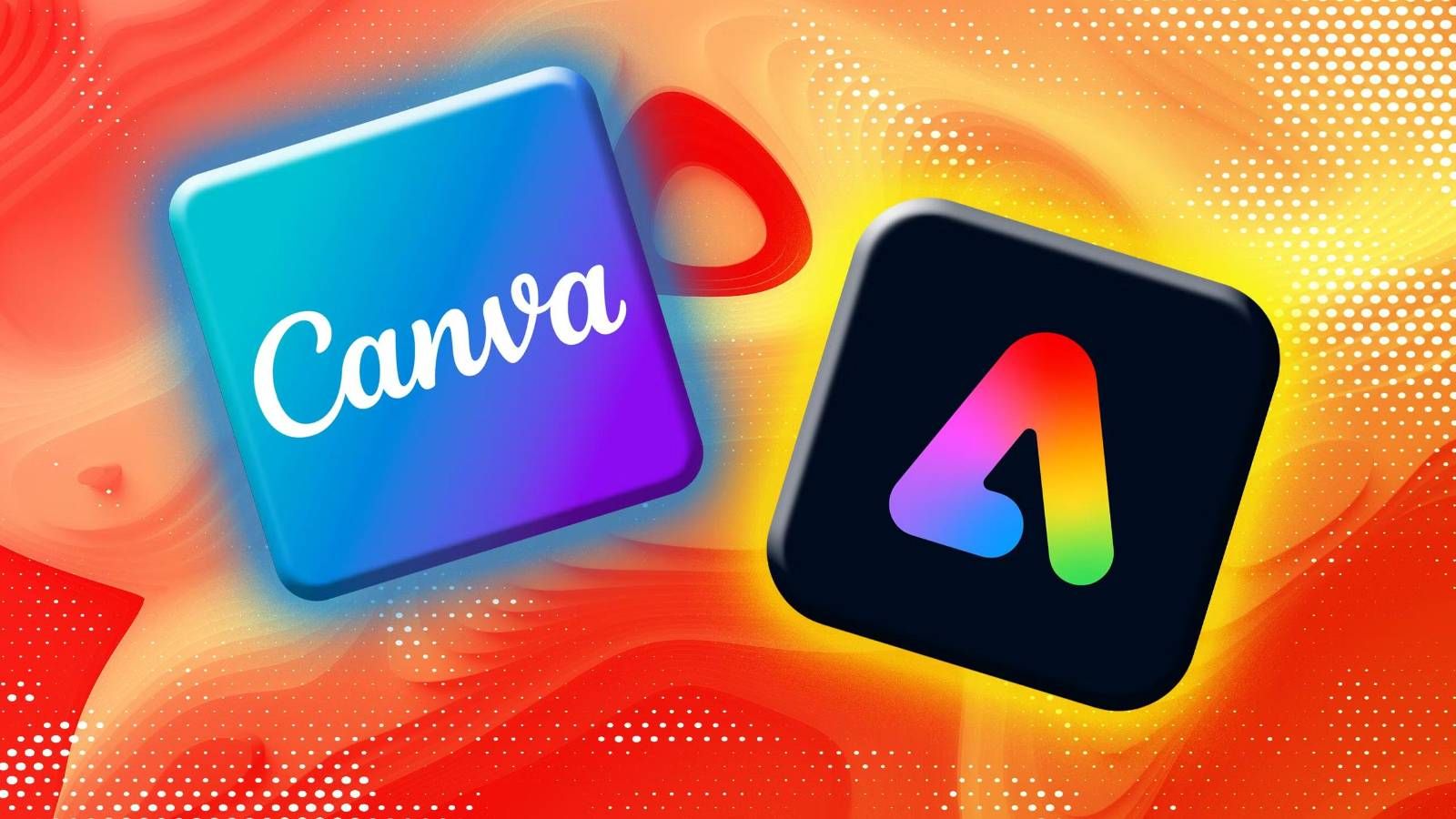

Choosing the right design tool can make or break your creative projects. Canva and Adobe Express are two popular options, but which one reigns supreme? Let’s learn more about this topic below with Slice Master, as we dive into a comprehensive comparison of these powerful design platforms.
Canva and Adobe Express are both web-based design tools that cater to creators of all skill levels. They offer a wide range of features and templates to help users create stunning visual content for various purposes.
Canva, founded in 2013, has quickly become a go-to design tool for many creators. It boasts a user-friendly interface and a vast library of templates, making it accessible to beginners and professionals alike.
Adobe Express, formerly known as Adobe Spark, is a relatively newer offering from the software giant Adobe. It aims to simplify the design process while leveraging Adobe’s powerful creative tools and extensive resources.
Both platforms offer free and paid versions, with the latter providing access to premium features and content. Let’s explore their key features, pros, and cons to help you decide which one suits your needs best.
When it comes to user interface and ease of use, both Canva and Adobe Express have their strengths. Canva is renowned for its intuitive drag-and-drop interface, making it incredibly easy for beginners to get started.
The platform’s layout is clean and organized, with all the essential tools readily accessible. Users can quickly find templates, elements, and features without feeling overwhelmed by complex menus or options.
Adobe Express, on the other hand, offers a sleek and modern interface that aligns with Adobe’s design aesthetics. While it may have a slightly steeper learning curve compared to Canva, it still remains user-friendly.
The platform’s interface is well-organized, with clear categories and a logical workflow. Users familiar with other Adobe products will find the experience seamless and intuitive.
Both platforms offer helpful tutorials and guides to help users get started and make the most of their features. However, Canva’s extensive library of video tutorials and step-by-step guides gives it a slight edge in this department.
Templates are a crucial aspect of any design tool, as they provide a starting point for creators and help maintain consistency across projects. Both Canva and Adobe Express offer a wide variety of templates for various purposes.
Canva boasts an extensive library of over 500,000 templates, covering everything from social media posts and presentations to flyers and business cards. The templates are organized into categories, making it easy to find the right one for your project.
Adobe Express also offers a diverse range of templates, although its library is not as extensive as Canva’s. However, the quality of Adobe’s templates is generally higher, with more professional and polished designs.
Both platforms allow users to customize templates to suit their needs. Canva’s drag-and-drop functionality makes it easy to add or remove elements, change colors, and adjust layouts.
Adobe Express offers similar customization options, with the added benefit of leveraging Adobe’s powerful design tools. This allows for more advanced editing and fine-tuning of designs.
In addition to templates, both platforms provide access to a vast library of stock images, illustrations, and design elements. Canva’s library includes over 100 million stock photos, videos, and graphics.
Adobe Express users can access Adobe Stock, which offers a massive collection of high-quality images, vectors, and illustrations. The integration with Adobe Stock gives Express an edge in terms of professional-grade content.
Both platforms offer free and premium content, with paid subscriptions unlocking access to a wider range of assets. Canva’s Pro plan includes over 100 million premium stock photos, while Adobe Express provides access to the entire Adobe Stock library.
When it comes to features and functionality, both Canva and Adobe Express offer a wide range of tools to help creators bring their visions to life. Let’s explore some of the key features of each platform.
Canva offers a comprehensive set of design tools, including text editing, image filters, and background removal. The platform also provides features like photo enhancing, color palette generation, and design resizing.
Adobe Express leverages Adobe’s powerful design tools, offering advanced features like professional-grade photo editing, typography options, and advanced color adjustments. The platform also includes Adobe’s AI-powered tools for quick edits and enhancements.
Both platforms offer features like brand kits, which allow users to save and apply their brand colors, fonts, and logos across multiple projects. This ensures consistency and saves time when creating branded content.
Collaboration is essential for many creators, and both Canva and Adobe Express offer features to facilitate teamwork. Canva allows users to invite team members to collaborate on projects in real-time, with the ability to assign roles and permissions.
Adobe Express also offers collaboration features, allowing users to share projects and work together. However, Canva’s collaboration tools are more robust and user-friendly, making it easier for teams to work efficiently.
Both platforms provide easy sharing options, allowing users to generate links or download their designs in various formats. Canva offers a wider range of export options, including animated GIFs and videos.
In today’s mobile-first world, having access to design tools on-the-go is crucial. Both Canva and Adobe Express offer mobile apps for iOS and Android devices, allowing users to create and edit designs from their smartphones or tablets.
Canva’s mobile app is feature-rich and closely mirrors the desktop experience. Users can access most of the platform’s tools and templates, making it easy to create designs on the move.
Adobe Express’s mobile app is also well-designed and offers a seamless experience across devices. However, some users find that it lacks some of the advanced features available in the desktop version.
When considering which platform to choose, pricing and value for money are important factors. Both Canva and Adobe Express offer free and paid plans, with varying features and limitations.
Canva’s free plan is quite generous, providing access to a wide range of templates, stock images, and design tools. The Canva Pro plan, priced at $12.99 per month (billed annually), unlocks premium features and content.
Adobe Express offers a free plan with limited features and a Premium plan priced at $9.99 per month (billed annually). The Premium plan includes access to Adobe Stock and advanced features like premium templates and fonts.
When comparing the paid plans, Canva Pro offers better value for money, especially for teams and businesses. It includes features like unlimited storage, brand kits, and social media scheduling tools.
Adobe Express Premium, while slightly cheaper, may be more appealing to users who are already invested in the Adobe ecosystem or require access to Adobe Stock for their projects.
Integration with other tools and platforms can greatly enhance the usefulness of a design tool. Both Canva and Adobe Express offer integrations with various third-party services, but their approaches differ.
Canva provides integrations with popular platforms like Google Drive, Dropbox, and social media networks. This allows users to easily import content and share designs directly to their preferred platforms.
Adobe Express, being part of the Adobe Creative Cloud ecosystem, offers seamless integration with other Adobe products. This can be a significant advantage for users who rely on Adobe’s suite of creative tools.
For example, users can easily import assets from Adobe Photoshop or Illustrator into their Express projects, or export designs to other Adobe applications for further editing.
Canva’s ecosystem is more focused on providing a comprehensive all-in-one solution, with features like content planning and social media scheduling built into the platform.
Adobe Express, while not as all-encompassing, benefits from being part of a larger ecosystem of professional-grade creative tools. This can be particularly appealing to users who require more advanced design capabilities.